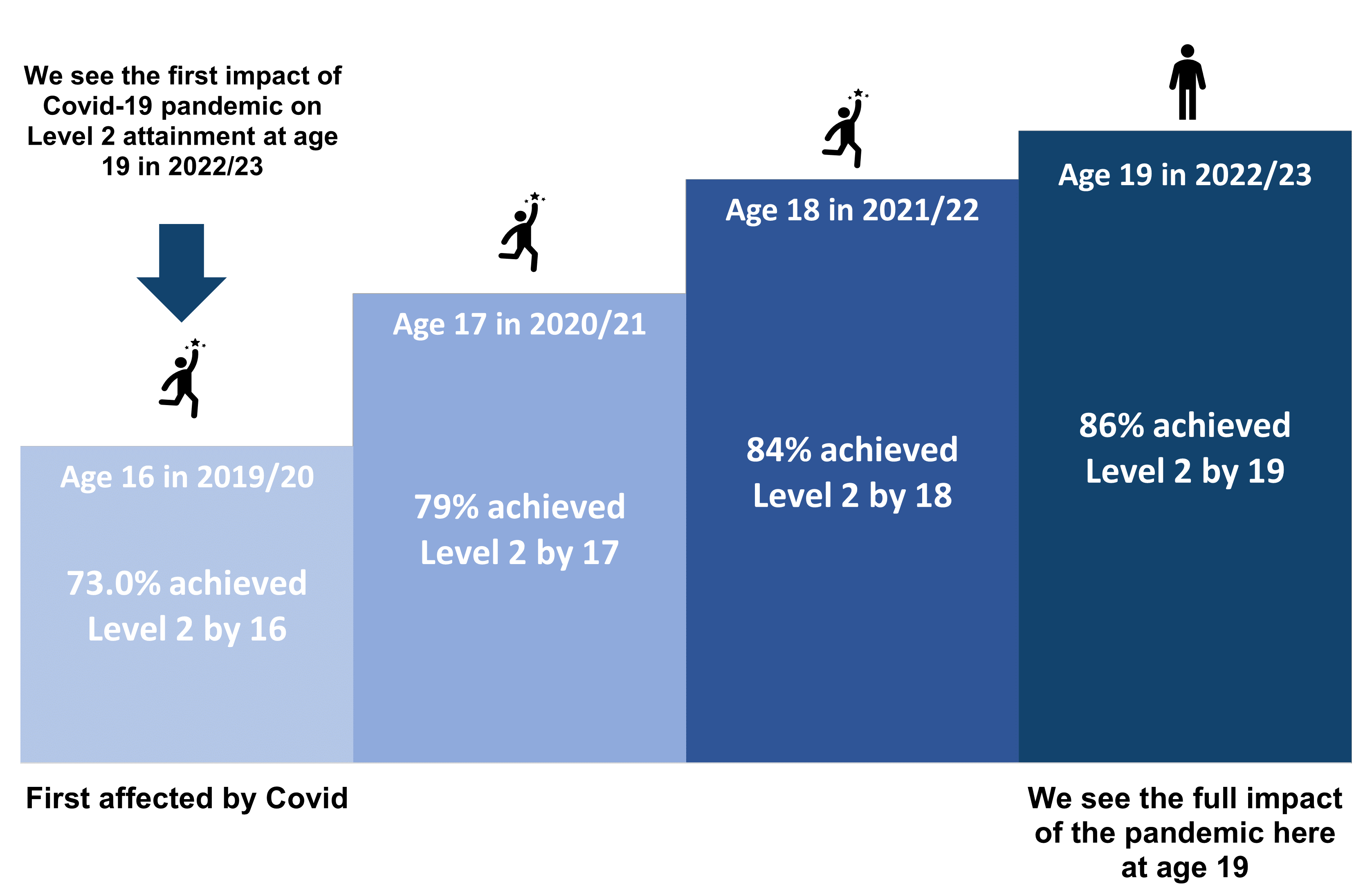These national statistics provide information at both national, local authority and local authority district level on the attainment of 19-year olds at the end of each academic year (e.g. 2022/23 refers to 31 August 2023). They are used to monitor trends in attainment over time and changes in attainment within different groups.
Time period in this data relates to the year in which the young person turned 19.
The figures are based on a matched administrative dataset produced by the Department for Education consisting of data from the Individualised Learner Record (ILR), awarding body results and the school census. When making time-series comparisons, only figures from the latest release should be used due to small revisions to previously published figures (see accompanying methodology).
In these statistics, the attainment of the following measures refers to the proportion of people who achieved them as at 31st August i.e. the end of the academic year (e.g. 2022/23 refers to 31st August 2023):
• Level 2 is 5 (or more) GCSEs at grades 9-4/A*-C or equivalent e.g. Level 2 vocational qualification
• Level 3 is 2 (or more) A levels or equivalent e.g. Level 3 vocational qualification
• Level 2 in English and maths is GCSEs at grades 9-4/A*-C in those subjects or equivalent qualifications.
• Progression in English and maths is those people who did not achieve level 2 in English and/or maths at 16 but had achieved both at 19.
Given the circumstances in which grades were awarded in 2020 and 2021 due to the Covid-19 pandemic, caution should be taken in comparing 19/20 and 20/21 data to other years.
For further background information on these statistics, including on the data sources, qualifications and the methodology, please see the accompanying methodology. Underlying data is also published alongside this release.
The statistics are based on two cohorts as follows:
• An overall all-institution cohort has a numerator based on all young people captured in the dataset (not just those in the state-funded sector in year 11), and has a denominator based on the whole school population (including state-funded maintained schools, independent schools, alternative provision (APs) and pupil referral units (PRUs)), as recorded at academic age 14 i.e. year 10, or the penultimate year of secondary school.
• The state-funded cohort is based on pupils recorded as being educated in mainstream state-funded schools at academic age 15 i.e. year 11 or the final year of secondary school. The state-funded cohort includes breakdowns by various pupil characteristics (as recorded at academic age 15) and by local authority.
There are differences in the methodology in the attainment measures for the all-institution and state-funded cohorts, which mean that they should not be directly compared. However, as figure 1 shows, trends are consistent for the two cohorts. Attainment for all-institutions, which includes young people in independent settings in year 11, is higher than those in mainstream state-funded only.

